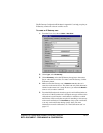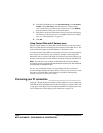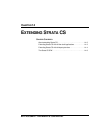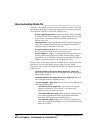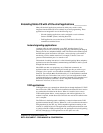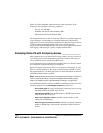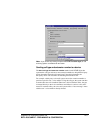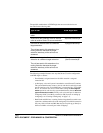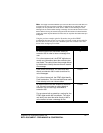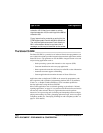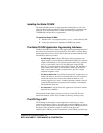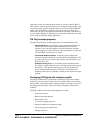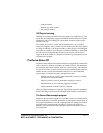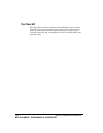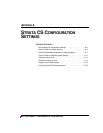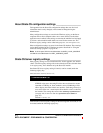
CHAPTER 14. EXTENDING STRATA CS 14-7
BETA DOCUMENT - PRELIMINARY & CONFIDENTIAL
Note: It is highly recommended that you use more than one voice mail device in
a scenario such as the previous example. A single device at extension 300, for
example, can only handle one call at a time—either a user checking for voice
messages or an external caller leaving a message. If a second call comes in to the
device while it is busy, the second call goes to the final action of extension 300’s
routing list, which may be Strata CS’s voice mail, or any other final action that you
configured.
Using the previous example again for illustration, the possible DTMF
combinations that may be sent to one of the voice mail systems are described in
the next table. In all cases, the call is handled by the first available voice mail
device in the workgroup Voice Mail.
Type of call DTMF digits sent
An external caller calls Voice Mail directly at
extension 300 in order to leave a message for a
user.
For a direct external call, the DTMF digits do not
contain any information about the extension that
was dialed. The caller follows the prompts offered
by the device to identify the user who will receive
the message.
“1”
Frank Smith at extension 101 calls Voice Mail
directly at extension 300 in order to retrieve his
voice messages.
For a direct internal call, the DTMF digits identify
Frank’s extension. The voice mail device can send
Frank directly to his own voice mailbox.
“2101#”
An external caller calls Miri Anatolia at extension
102. If there is no answer or a busy signal at
extension 102, the call rings Voice Mail at
extension 300.
For an external call re-routed by a routing list, the
DTMF digits contain Miri’s extension. The voice
mail device can send the caller directly to Miri’s
voice mailbox to leave a message for her.
"5102#"



